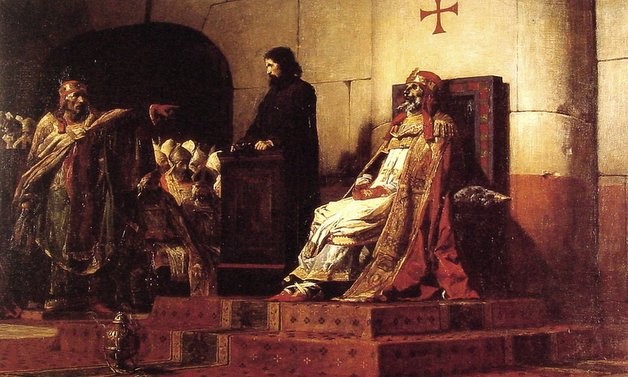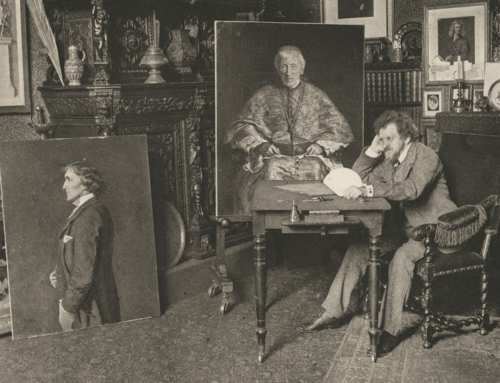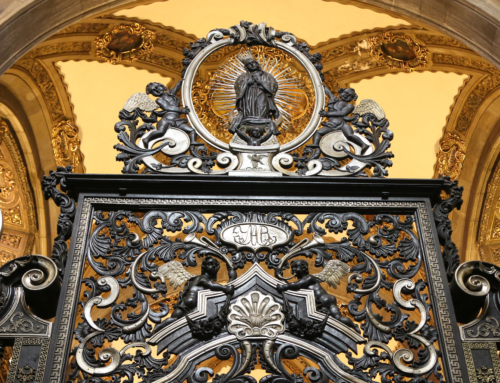Has there ever been a cause for more unreflective editorializing than the recent papal canonizations? If you clicked on nearly any commentary about the new saints in the past few days, you’ve likely been subjected to these kinds of insights:
The joint canonization of Pope John XXIII and Pope John Paul II was a blatantly political balancing act by Pope Francis as he tried to appease warring conservative and liberal factions in the Church. Each faction holds its own sainted pontiff in unanimous and wholehearted esteem, while harboring deep suspicions about whether that other pope ever did anything worthwhile.
The New York Times has said it; therefore, it must be so.
Versions of this analysis have gushed from the commentariat like some sort of bilious fountain. With certain honorable exceptions, these pieces all make some of the same assumptions:
- The Church is divided between conservatives and liberals, who roughly align with their American political equivalents.
- Popes like John XXIII and John Paul II can best be understood as factional leaders of these warring ideological camps within the Church.
- Canonizing saints is essentially a political endorsement of one party over another—a corollary to the foundational assumption that every action by the Church is basically about power.
This understanding leaves little room for inconvenient facts, such as John XXIII’s traditional Italian piety or his endorsement of Latin as the universal language of the Roman Catholic Church. Neither does it take into account John Paul II’s innovative contributions to the Second Vatican Council, or his enthusiasm for inculturation and diversity.
Instead, these complex figures are flattened into a single dimension, which allows us to form immediate conclusions based on our prejudices without ever having to grapple with deeper realities. What a relief! All that thinking would have seriously eaten into time reserved for perusing BuzzFeed lists.
Now, mocking the secular media for authoring uninformed pieces about the Catholic Church is like plucking the low-hanging fruit—an easy pleasure that yields immediate rewards. What should give Catholics pause is that many of us have—consciously or unconsciously—adopted this politicized, polemical vision of the Church.
Feeling torn between the city of God and the city of man is nothing new. In recent years, though, one gets the sense that every Catholic must choose between ecclesial camps in an ideological civil war, where the greatest foe is the enemy within. This spirit of conflict infects every aspect of Catholic life. We can see it most symptomatically in the liturgy wars, where the source and summit of Christian life becomes the battleground par excellence for our identity.
The two newly-sainted pontiffs have become symbols of different responses to these vexed questions of identity. John XXIII, avuncular and self-effacing, was a roly poly counterpoint to the gaunt other-worldliness of Pius XII in his final years. He represented, for many Catholics of that generation, a breath of fresh air as he “opened the windows” of the Church to the modern world. By calling the Second Vatican Council, he prompted both a return to the sources of the faith and a newfound willingness to speak about them in the language of the times.
But after his death in 1963, he became a reference point for all the dashed hopes and unfulfilled expectations in the the years that followed. If an analogy to American politics must be made, then President Kennedy isn’t the worst one. Both figures were frozen in the amber of early 60s optimism, while their successors were worn down grappling with the messy details and compromises of what followed.
For a later generation of Catholics, the cultural and religious scene was dramatically different. Living in an increasingly secularized world, many saw John Paul II as a countercultural icon, a happy warrior for truth against communism, relativism, and all the other attendant modern evils. He, too, became a symbol for what the Church can be at its best, and a touchstone for those who came of age during his pontificate.
The Church has been profoundly affected by the crisis of Western civilization in the past century and is in the awkward position of finding her footing in new and hostile terrain. How should she respond: with still more dialogue and outreach to the modern world à la John XXIII, or a doubling-down on her identity apart from the shifting sands à la John Paul II?
The unsettling reality is that neither approach embraces the fullness of the Church’s mission—or of these two great modern saints, for that matter. Each in his own way proclaimed the truth of the Catholic faith as an invitation to a world in need of the gospel, and in so doing each achieved the heights of sanctity. This is the real import of canonizing John XXIII and John Paul II. Through their heroic virtue, they were witnesses to what God’s grace can accomplish. Fallen human beings can be perfected by living the Christian life. They discovered true happiness in becoming instruments of God’s praise.
This virtue, this sanctity, always reflects the particularities of the individual. In every time and every place, for people of all walks of life and with every kind of temperament, God raises up saints who shine with the light of Christ. Italian and Polish, spherical and athletic, idealistic and fearless—vive la différence!
✠
Image: Jean Paul Laurens, Pope Formosus and Stephen VI







